All CG and VFX artists, get inspired from Steve Wright’s interview.
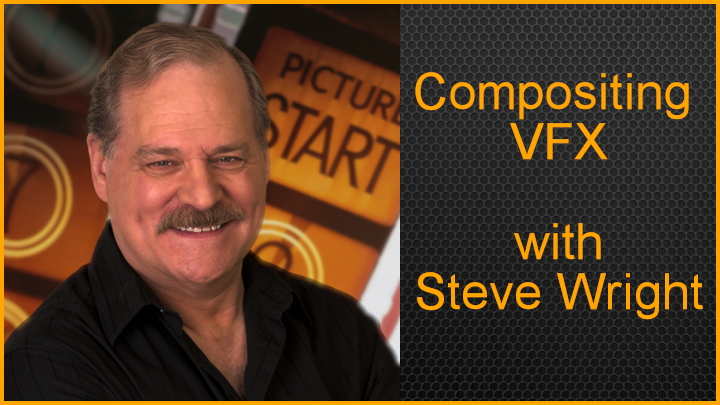
Steve Wright is a 20 year veteran of Feature Films and Visual Effects industry, having worked on over 70 feature films as a Senior Compositor. Since 2005, he turned to teaching and has trained the staffs at dozens of VFX studios around the world including Disney and Pixar, has hundreds of tutorials on LinkedIn Learning and Lynda.com, dozens of online students around the world, and has published two popular books on compositing visual effects available on Amazon.com. You can visit his Nuke VFX Compositing training website at www.fxecademy.com.
The Virtual Assist welcomes Steve Wright, the Maestro of Compositing. Kindly share your educational background.
While I went to San Jose State as a Physics major, my compositing educational background has been the fiery furnace of production. I started in visual effects long before there was any education available on it. I learned digital electronics and programming in the 80’s as a game programmer at Atari, then learned 3D animation in the early 90’s at Robert Abel and Associates, then learned compositing in the late 90’s at my own studio in Hollywood on a Pixar image processing computer.
There were no courses, no teachers and no books available then.
Why you zeroed on our Visual Effects and Animation industry as your professional career?
I fell into visual effects from my work on video games at Atari.
I was hired to head up game development for Sega/Paramount which was located on the Paramount lot in Hollywood. The mission was to turn Paramount film properties into video games for Sega arcade games. Just after I moved to Hollywood, the video game industry fell into a slump, the business venture was closed, and I found myself in Hollywood looking for a job. That’s how I got to Robert Abel and Associates, one of the founding fathers of CGI.
When you started your career, there was not much formal education in the domain of CG and VFX softwares. Please share your struggle in detail.
My big break was getting the job at Robert Abel and Associates. I was able to learn 3D there from the artists and engineers that were actually inventing it.
The programming staff at Robert Abel’s went on to form Wavefront, the first commercial 3D software. Compositing was much more difficult because there was simply no one who could teach it. I purchased several Pixar image processing computers to do compositing in my studio in Hollywood, Sidley Wright & Associates. The Pixar was a special purpose image processing computer from Pixar but did not even come with a manual as it was designed for scientific and medical imaging. I was the first to use it for visual effects.
All I had was a long list of image processing operations that I could combine by programming in Unix to composite a shot. It was 6 months before I thought I was smarter than the Pixar. That experience forced me to learn compositing at the atomic level long before there were any classes, books, or instructors. My math background was very helpful for reading white papers and SIGGRAPH (Special Interest Group on Computer GRAPHics and Interactive Techniques) studies.
How has been your overall experience in the Gaming industry? Please share your milestone achievements.
My gaming experience was at Atari at the birth of the video game industry in 1978. While a game programmer, I developed the first scrolling playfield for my Pele’s Soccer game and created the first “payoff” graphics when you scored a goal with a show of fireworks. Of course, I was aided by the fact that I was using the first 4K game cartridge as 2K was the previous limit.
After that I was Manager of game development for the home video game division (the Atari 2600) where I implemented the first “story line” for a video game where the manual told the backstory on the game, which is now standard. At that time, all the game graphics and sound were designed by the engineers that programmed the games, so I brought in an actual graphic artists and musicians to work with the engineers.
There was a swift move from Gaming to CG and VFX. Did it came to your way or was it calculated risk?
I actually fell into it.
From Atari in Sunnyvale, California, I went to Sega/Paramount in Hollywood as mentioned above. That put me in Hollywood when the gaming industry crashed in 1983. Suddenly I was in the CG industry at Robert Abel’s. I worked in CG for 6 years there, then when Abel folded I opened my own CG company (Sidley Wright Associates) with Steve Sidley, my good friend from Abel’s. The first couple years were just CG, but then I noticed that the client was taking our CG to post for compositing. There were plenty of CG shops in Hollywood, so to gain a competitive advantage, I decided that we should deliver the client a finished shot, which means we had to composite it ourselves. Looking around for tools, the Pixar computer was the only game in town that could put two images together with professional quality. That’s what got me into VFX.
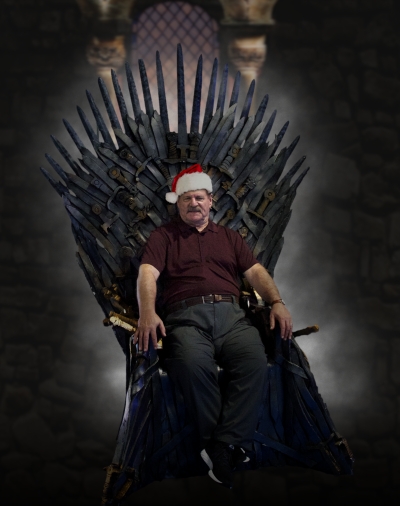
Your growth in the VFX industry and technology evolvement went parallel. From whom and how you keep on learning and exploring?
As a physics major and math minor I have always loved technology and I have been fortunate to have contacts with the movers and shakers of the industries, like the software developers at Robert Abel and Associates. When I moved into compositing, I learned from the white papers published by Pixar. While at Cinesite Hollywood I learned about log images from Glen Kennel, the Kodak color scientist that developed them for the Cineon file format. While at Cinesite Kodak invented the Digital Intermediate process (DI) where again I was able to learn from the Kodak mathematicians and engineers like Dr. Bogdanowicz.
Later, when I got into Nuke training I established a direct line to the Nuke engineering department at the Foundry. When Imagineer hired me to produce training vidoes for Mocha, I learned about planar tracking from their engineers, and for stereo conversion I learned from the engineers at YUVSoft when they hired me to produce training videos for their stereo conversion software. I have been fortunate to have been able to learn from the sources themselves.
Let us know more about “Compositing Visual Effects: Essentials for the Aspiring Artist”.
“Compositing Visual Effects: Essentials for the Aspiring Artist” is actually an introductory book to compositing for non-compositors.
My other book “Digital Compositing for Film and Video” was designed as a manual for working compositors and is intended as a machine-side reference for them. “Compositing Visual Effects” is intended for students, directors, producers, and others interested in understanding what compositing is about and how it is used in movies and TV. It teaches what compositing is and how it is used for visual effects, not how to do it.
Also let us know about “Digital Compositing for Film and Video: Production Workflows and Techniques”.
I am on the 4th edition of “Digital Compositing for Film and Video” because our industry is evolving so rapidly.
The first edition was all about keying and compositing – the usual stuff. By the fourth edition I was covering Deep Compositing, Alembic Geometry, VR, Stereo Conversion, ACES (The Academy Color Encoding System), Light Field cinematography, and all manner of digital exotica. In the fourth edition, I also made a very important addition to the book – workflows – which are step-by-step procedures for common visual effects tasks like grain management, lens distortion management, multi-pass CG compositing, and many others. I was very proud to learn that my book is known as “the compositor’s bible”.
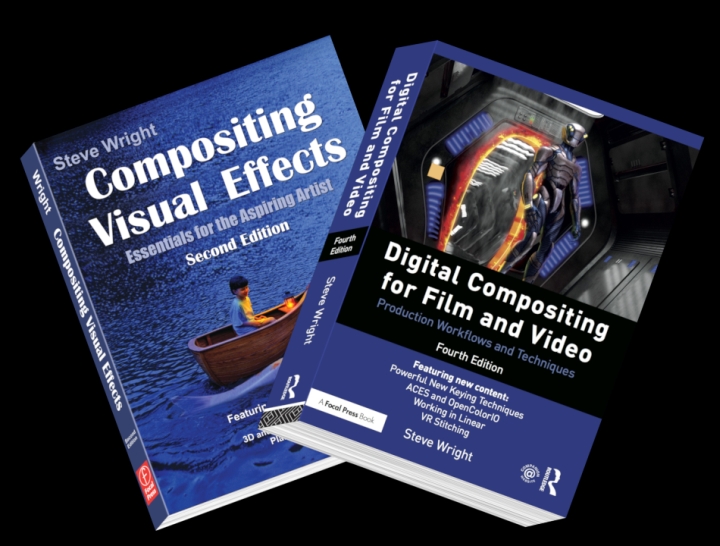
How do you ‘think’ before creating a course curriculum?
My first thought, of course, is what is the topic to be covered – camera tracker, spline warp, etc. My second thought is how deep do I want to go – too deep and the course is too long, too shallow and there is not enough useful information. My third thought is what is the “story” I want to tell. I want to develop a clear learning narrative that reveals the features and functions of the topic in question. And my last question is how do I want to tell that story – what examples do I need, what demos shall I do.
In your words, how do you define ‘Digital Compositing’?
My definition of Digital Compositing is to combine images from multiple sources in such a way that they all appear to be shot at the same time with the same camera under the same lighting conditions.
Beyond that, Digital Compositing is now expected to cope with any desired modification of any scene – remove a car, night for day, or add a CG character or object. We must also now do speed changes, color space conversions, warping, tracking, stereo conversions and VR prep. We have become the “finishers” for CG shots. The CG department blasts out the lighting passes without too much tweaking and the compositors dial them in for the final look during comp. The evolution of compositing is to take over more and more of the shot in 2D because we are much faster than the 3D department. Huge example – Deep Compositing.
What inspired you to move from being an artist to full time trainer?
Being laid off as an artist.
I worked at Cinesite Hollywood for over 6 years when Kodak shut it down in 2003. I had become very useful to the Digital Intermediate department while it was being developed, so when Cinesite was closed they laid off every artist – except for me. The DI department asked to retain me, where I stayed for 2 more years. Management finally decided it would be cheaper to lay off an expensive senior artist (me) and hire cheaper junior artists. So I was out of a job.
But my book “Digital Compositing for Film and Video” had been on the market for a couple years and I was getting invitations to teach at VFX companies all over the world. So in 2005, without looking back, I launched my first training website and shifted to teaching and training full time.
How the transition from Shake to NUKE happened?
That’s an interesting story. I taught Shake for several years when Apple abruptly dropped it in 2009. I was looking around for what to do next, so I asked myself “what is the next big trend in compositing?”. The answer was 3D compositing. So I looked around for who was the leader in 3D compositing at the NAB show in Las Vegas and found Nuke at the Foundry booth. This was at the time of Nuke5. I walked up to the VP of Marketing at the NAB booth and announced that I wanted to be a Nuke trainer.
The VP of Marketing fell all over himself with gratitude. Seems that their biggest problem trying to sell Nuke at that time was when potential customers asked where they could hire Nuke artists the only answer was “from Digital Domain”. Suffice it to say, this put a huge damper on Nuke sales. The Foundry was incredibly greatful and fixed me up with free software, documentation, contacts in engineering, and anything else I wanted to start teaching Nuke. I was literally the first Foundy certified Nuke trainer.
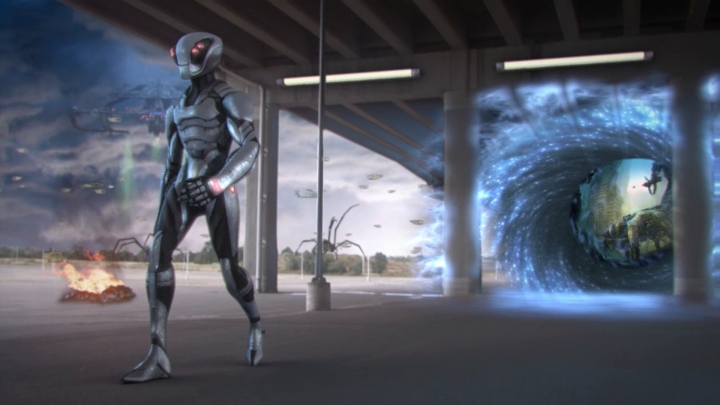
What are your suggestions for novice and experience artists, to excel in Visual Effects industry?
The biggest issues are networking, knowledge, speed, and teamwork. You need to network to stay in touch with as many in the industry as you can to learn of opportunities for work. You obviously need knowledge of our craft to be able to cope with whatever task is thrown at you without bugging the senior guys. Speed is essential to maintain productivity for the studio to stay employed. I always say “speed is life” in visual effects. And teamwork is an essential ingredient as our work is highly integrated with adjacent departments and other member of the VFX staff.
Remember that 90% of all job opportunities come from someone recommending you for an opening a studio, and nobody wants to work with a jerk.
What is your advise to all artists during this Corona outbreak?
Beyond all of the well documented health care recommendations like social distancing and hand washing, my biggest advise is to prepare to work remotely. This medical emergency has forced studios to quickly set up remote working protocols, but when it is over I predict that working remotely will be the new norm and will fundamentally reshaped our industry. Be ready for it.
What are your next goals?
My training website teaches Nuke VFX Compositing, which is the industry tool for our work. But there are two other components to compositing – art and technique. Art is the ability to make it look right. Technique is the experience to know the right approach to any particular problem.
After I finish populating my training website with Nuke tools, I want to move into more “job ready” career oriented training such as a Roto and Prep course to learn the entry level skills required to start work in the exciting worlds of VFX.
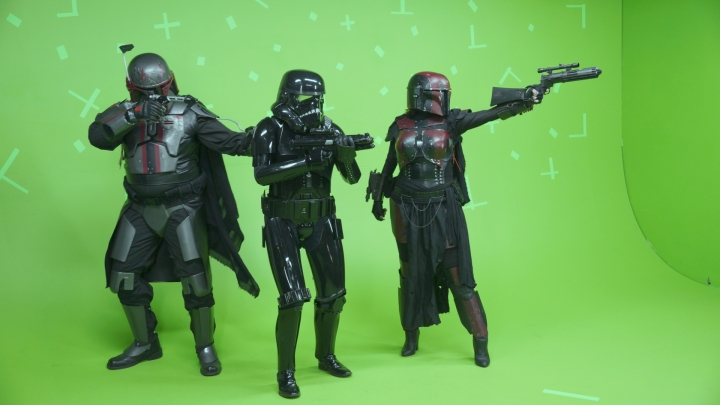
We thanks Steve Wright to spend his valuable time for the interview. It will surely help CGI and Visual Effects artists to get industry insights and useful tips for their professional career.

1 comment